SUMMARY
In the metal sector, the filler returns to the manufacturer the packaging used in the transport and storage of the containers. To perform this task in a simple and efficient way, it is convenient to apply a series of measures that are developed in this article.
INTRODUCTION
Metallic containers are products of little value, since they are always destined to contain something that is what really matters. Therefore, what in others can be a negligible component, in this industry is of great importance. This is the case of the packaging used to protect and transport them. Its value in relation to the cost of packaging is of considerable consideration. Hence, one can not disregard the `possibility of being reused, in order to reduce its incidence on the final cost of boats. In addition, there is the environmental factor that forces to recover these materials to be used again.
For this reason, the metal industry uses returnable packaging in a generalized way. Therefore, the handling and return of these materials are an important part of the manufacturer-customer relations cycle. A rapid return in good condition of the packages to the owner thereof, will significantly help to lower costs. On the contrary, delays at the time of reimbursement, force the packaging manufacturers to buy more materials unnecessarily, and the costs are increased by it without benefit for both parties.
The packages to be returned are usually:
– Wooden pallets of containers and covers.
– Cardboard separators.
– Cardboard covers.
Below is a series of ideas to facilitate the handling and return of them in a safe and efficient way, without this supposing an extra cost for the client.
We will begin by saying that all packaging, once unpacked the containers they contain, and waiting to be returned, should be stored outside any place that can transmit odor, toxicity, dirt or oils, or that run the risk of being stained, and that would be unused. They should not be stored in the open, exposed to rain or other moisture. It is necessary to keep them in a dry and tidy place.
The attention to them must begin before, the depalletized area is necessary to be clean and tidy. In no case shall its elements, separators or pallets be used as “carpets” or means to cover puddles of water or other liquids in the packaging area, exposed to the footprints of people or vehicles.
DRIVING
For an adequate management of them, the following rules have to be enforced:
– Handle all materials with care.
– Do not bend or tear cardboard separators.
– Do not drop or hit the wooden pallets.
– Stack all returnable components when disassembling the packaging of containers and covers.
– Do not mix packaging from different packaging suppliers.
– Keep materials dry and clean.
– Do not return the plastic film, paper bags and strips.
To achieve all this is not necessary additional labor, but have a place for everything and maintain order at work. The same operator that manipulates the depalletizer, can each time a new pallet loads, order the packing elements that are released.
RETURN OF EMPTY PALLETS
The wooden pallets are the most expensive items, although it is true that they are also the ones that are most often reused. If a space marked on the floor is enabled, next to the depalletizer, each time a pallet is emptied of cans, it should be placed in this place, gradually forming a pile. The operator will transfer the same to the warehouse when he has a certain height. In the warehouse they must be stored in such a way that they can be returned as shown in Figure 1:
Figure nº 1: Return of pallets
This will be grouped in the warehouse until you have enough to complete a return charge. During these manipulations e will take into account:
– Stack them always in the same position with the top face up.
– Stack with forklift truck up to the maximum height that allows the return transport. This is usually 250 cms. what supposes between 16 to 18 pallets of height.
– Do not return to a supplier pallets from different suppliers mixed
RETURN OF SEPARATORS
As the containers are being depalletized, the separators should be carefully stacked forming a well-squared assembly. As an aid to this, in the vicinity of the depalletizer a dihedral, which can be made of wood or metal sheet, will be placed so that it can be used as Support for stacking separators with order. See figure nº 2.
Figure nº 2: Diedro for stacking separators
The number of separators per pallet will depend on the thickness of the pallets, a suitable number can be 400 units / pallet, which means a net pallet height of about 1100 mm.
Figure nº3: Return of separators
Figure 3 shows how separators should and should not be returned to avoid damage to them. The first drawing shows the ideal solution, well squared, protected with a cover and strapped together. Also the second drawing is a good possibility although simpler, enough for short trips.
The third drawing is how it should not be done. Badly stacked separators will result in breaks, bends and damage to the corners and edges of them. This will force them to be discarded since they would cause jams and falls of containers in the next use. It is always essential to preserve its cleanliness, since they are the elements that are in direct contact with empty containers.

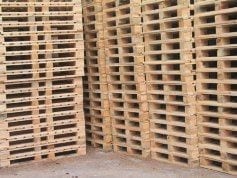
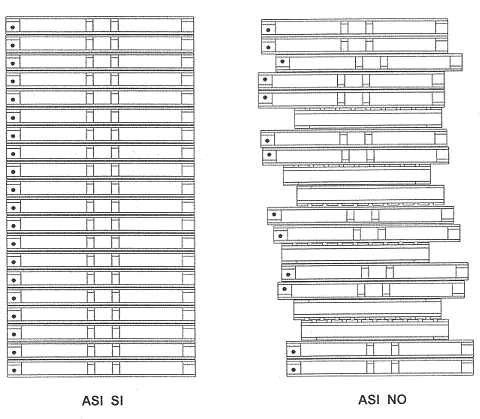
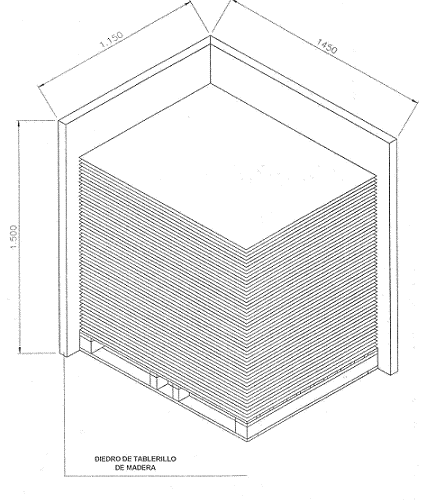
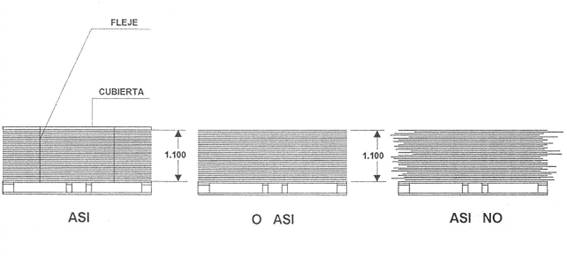


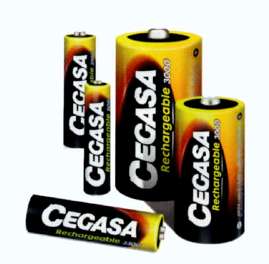
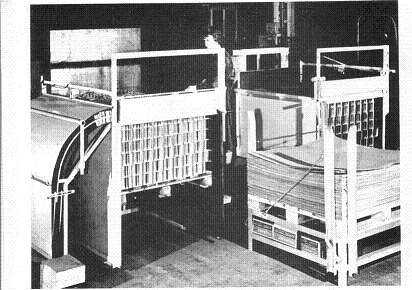
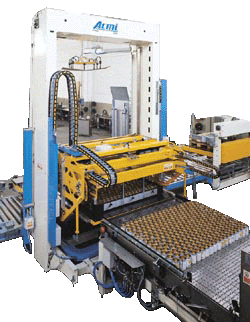

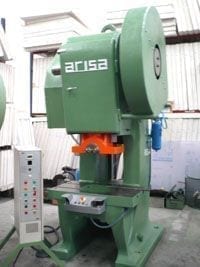


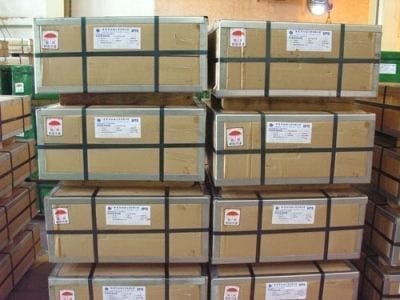



0 Comments